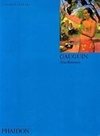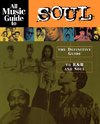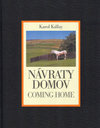
Work music
Source: Wikipedia. Pages: 24. Chapters: Sea shanties, Sea shanty, Work song, Drunken Sailor, Industrial folk music, Repetitive song, The Song of the Volga Boatmen, Barnacle Bill, Barrett's Privateers, Spanish Ladies, Bell Bottom Trousers, Dead Man's Chest,... Viac o knihe
Produkt je dočasne nedostupný
13.82 €
bežná cena: 15.70 €
O knihe
Source: Wikipedia. Pages: 24. Chapters: Sea shanties, Sea shanty, Work song, Drunken Sailor, Industrial folk music, Repetitive song, The Song of the Volga Boatmen, Barnacle Bill, Barrett's Privateers, Spanish Ladies, Bell Bottom Trousers, Dead Man's Chest, South Australia, Fisherman's Friends, Rogue's Gallery: Pirate Ballads, Sea Songs, and Chanteys, Good Ship Venus, Santianna, Blow the Man Down, Alfred Bulltop Stormalong, Limerick, Hamborger Veermaster, Venezuelan work songs, Rolling Down to Old Maui, Greenland Whale Fisheries, Don't Forget Your Old Shipmates, Sailing, Sailing, The Saucy Arethusa, Sons of the Sea, John Kanaka, Go to Sea Once More. Excerpt: Sea shanties (singular "shanty", also spelled "chantey"; derived from the French word "chanter", 'to sing') were shipboard working songs. The shanties that survived to be collected and preserved date from the 19th century through the days of steam ships in the first half of the 20th century. In the days when human muscles were the only power source available aboard ship, sea shanties served a practical purpose: the rhythm of the song served to synchronize the movements of the sailors as they toiled at repetitive tasks. They also served a social purpose: some find singing and listening to songs to be pleasant, and for these people it alleviates boredom and lightens the burden of hard work, of which there was no shortage on long voyages in those days. Despite this, the Royal Navy banned singing during work-it was thought the noise would make it harder for the crew to hear commands-though capstan work was accompanied by the bosun's pipe and it was traditional for a fiddler to play when the anchor was being raised. Music of all kinds was permitted during off-duty times and was popular with both officers and crew; it was encouraged by some captains, who took pride in having a good band on their ship. Most shanties were and still are "call and response" songs, with one voice (the shantyman) singing the line and the chorus of sailors bellowing the response (compare military cadence calls). For example, the shanty "Boney" (about Napoleon): Shantyman: Boney was a warrior,All: Way, hey, ya!Shantyman: A warrior and a tarrier,All: Jean-François!Working it as a short-drag or sheet chantey (see below), hands on the line would synchronize their pulls with the last syllable of each response. Musically, shanties seem to reflect a variety of sources. "Spanish Ladies" is a perfect galliard (popular around 1600), songs like "Fire Marengo" look like West African work-songs, others are adapted "folk" songs or 19th century polkas and waltzes. Lyrically, like the blues, shanties often exhi
- Vydavateľstvo: Books LLC, Reference Series
- Formát: Paperback
- Jazyk:
- ISBN: 9781156230497


 Anglický jazyk
Anglický jazyk 




 Ruský jazyk
Ruský jazyk 



 Nemecký jazyk
Nemecký jazyk 
